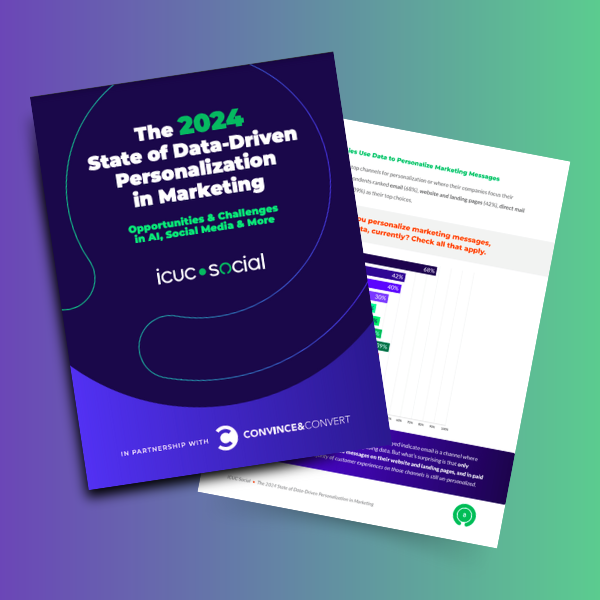
As entities in the banking, financial services, and insurance (BFSI) industry reduce their workforces, they turn to technology to fill in the gaps, especially around marketing and communications. But unlike many companies doing the same, these institutions face a bevy of regulations that complicate a technical solution.
Social media use, for example, can easily run afoul of regulations. Institutions can’t afford not to connect directly with consumers — that’s the promise and power of social media. But without clarity on content to post, social media teams can inadvertently violate rules and regulations. They walk right into steep regulatory fines, suspension, loss of business, and even legal action.
As a result, BFSI companies, especially financial institutions, must balance connecting with consumers on digital channels, like social media and complying with complex regulations to avoid penalties and protect their business interests.
Compliance Regulations
The BFSI sector holds an outsized sway over the broader economy, which naturally warrants heavy regulation. Look no further than the challenges Silicon Valley Bank and other regional banks have experienced. While regulators unpack the full story, more industry heavyweights point to social media’s influence and SVB’s social media strategy as catalysts of the collapse. If other entities weren’t nervous about social media before, they certainly are now.
Amid the systemic risks SVB encountered, localized brand presence — including social media for multi-location financial service brands — gets relegated to the back burner. Managing a central corporate social media program is tough enough, but what about bank branches trying to connect with their local communities? Each localized tweak of pre-approved content could jeopardize the whole program if a local team falls out of compliance.
And the list of laws, regulations, and guidance for compliance can be lengthy. The FDIC’s guidance for financial institutions highlights risk areas and compliance requirements for many financial instruments and products. Take, for instance, the disclosures required for deposit account advertisements, governed by the Truth in Savings Act:
Under [TISA] Regulation DD and Part 707, a depository institution may not advertise deposit accounts in a way that is misleading or inaccurate or misrepresents the depository institution’s deposit contract. If an electronic advertisement displays a triggering term, such as “bonus” or “APY,” then Regulation DD and Part 707 require the advertisement to clearly state certain information, such as the minimum balance required to obtain the advertised APY or bonus. For example, an electronic advertisement can provide the required information via a link that directly takes the consumer to the additional information.
Specific regulations on terminology and usage exist for all types of products and advertisements — and missing any of these pieces can expose organizations to:
- Government enforcement actions
- Civil lawsuits, including charges of defamation or libel
- Operational and reputational damage
Importance of Localized Social Media for Financial Institutions
Yet, social media provides a vital conduit for financial institutions to connect with everyday consumers. People use it to learn more about a business and decide where to bank or invest — especially at the local level.
According to a SOCi research report, localized content receives 12 times the engagement of more general or non-localized content. This type of content helps differentiate and highlight local institutions and increases online traffic to their pages, not just corporate pages. Localized content offers a more engaging experience for prospective customers, ultimately driving more revenue and repeat business.
Closing ranks and sanitizing every post will not prove a successful long-term strategy. Brands must balance how consumers experience and interact with them locally while remaining compliant across their digital channels like social media.
How Financial Institutions Can Mitigate Localized Social Media Risks
Better risk mitigation starts with prevention. Financial institutions should draft and implement social media policies and a risk management plan covering social media challenges. Guidelines should clarify:
- Who is responsible for managing social media activity
- How social media is used, including at the local level
- Approved messaging
- Escalation paths and decision points when issues arise
The FDIC also recommends establishing oversight on monitoring and responding to social media content. But a team monitoring social media at multiple locations — like a bank with several local branches — can get overwhelmed fast. The technology already assisting with lower headcounts can also help with risk mitigation; leaders should begin by investing in an all-in-one digital marketing toolset that includes compliance.
For example, keyword-based policies can limit an institution’s exposure to risky posts — think flagging specifically regulated terms like “bonus” or “APY.” Catching all those instances, however, gets exponentially more challenging as the number of locations to manage increases.
A digital marketing toolset can constantly monitor those locations’ social media presences and automatically flag posts with keywords for review. Corporate and local teams can then address potential post violations in real-time. These solutions can also store approved, branded content ready to be localized, eliminating the guesswork around what should or should not be posted.
Digital solutions don’t just help with compliance — they can also improve a company’s marketing strategies. A centralized platform can hold local profiles and track SEO effectiveness locally through website traffic and conversions. Teams can quickly identify and solve any drop in revenue at different locations while analyzing competitors and the broader market to maximize unbranded search rankings.
Meet Consumers Where They Are — And Do It Safely
As financial institutions increasingly rely on technology in their operations, navigating complex regulations and maintaining compliance becomes ever more critical. Implementing comprehensive social media policies and risk management plans, and adopting all-in-one digital marketing toolsets with compliance features, can mitigate risks and maintain a strong local presence.
By leveraging these digital solutions, institutions can remain compliant and optimize their marketing strategies, gaining a competitive edge in a marketplace yearning for high-quality local content and authentic connection.


